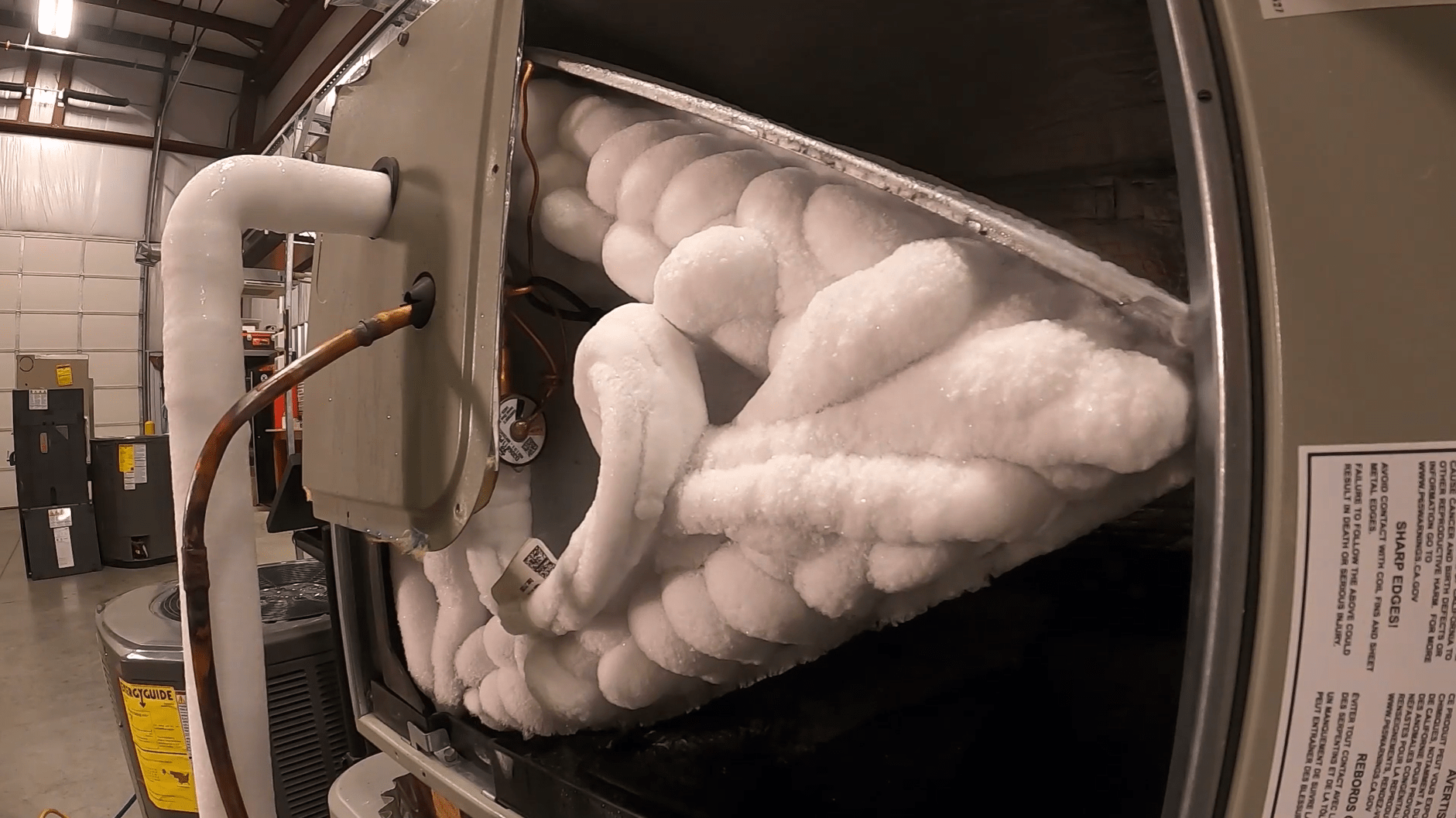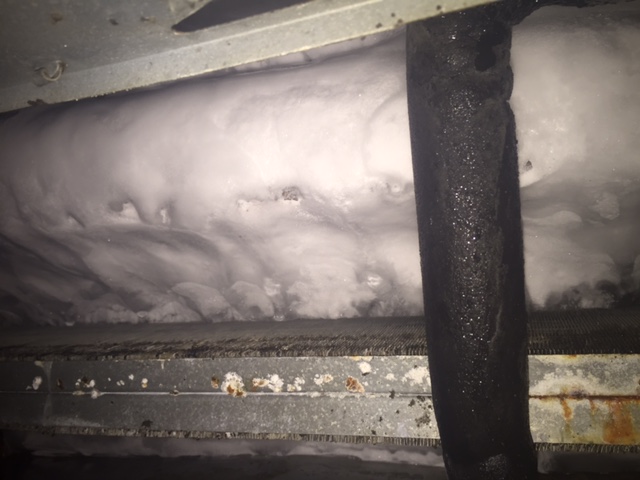How to Deal With a Frozen AC Pipe - Critical Measures for Recovery
How to Deal With a Frozen AC Pipe - Critical Measures for Recovery
Blog Article
Were you interested in answers concerning What Do I Do If My AC Pipe Is Frozen?

Introduction
Finding that your a/c pipeline is iced up can be worrying, specifically throughout warm summertime when you depend on your a/c unit one of the most. Recognizing what to do in such a situation is crucial to prevent additional damage to your cooling system and ensure your convenience inside your home.
Comprehending the Causes
Several elements can add to the freezing of an air conditioner pipeline. Understanding these reasons can aid you resolve the concern effectively.
Lack of Airflow
One usual reason for a frozen AC pipeline is inadequate air movement. When the air flow over the evaporator coil is restricted, it can create the coil to go down below freezing temperature, resulting in ice development on the pipeline.
Reduced Refrigerant Levels
Inadequate cooling agent levels in your air conditioning system can also cause an icy pipe. Low cooling agent degrees can trigger the pressure in the system to drop, causing the cold of moisture on the evaporator coil.
Cold Weather Conditions
In chillier environments, freezing temperatures outside can add to the freezing of air conditioning pipes. If your a/c unit is not correctly insulated or if there are leaks in the ductwork, cold air can infiltrate the system, triggering the pipeline to ice up.
Dirty Air Filters
Unclean or blocked air filters can restrict air movement in your AC system, bring about different issues, consisting of an icy pipeline. It's vital to change or clean your air filters on a regular basis to guarantee correct air flow and stop ice accumulation.
Indications of a Frozen AC Pipe
Identifying the indications of a frozen air conditioner pipe is crucial for punctual action.
Lowered Airflow
If you see a substantial decrease in air flow from your vents, it could show a frozen pipe.
Ice Buildup on the Pipe
Visible ice build-up on the refrigerant line or the evaporator coil is a clear indication of a frozen AC pipeline.
Unusual Sounds from the Unit
Uncommon sounds, such as hissing or gurgling, coming from your a/c unit can indicate that there's ice existing on the pipe.
Immediate Actions to Take
When confronted with a frozen air conditioning pipeline, it's necessary to act swiftly to stop additional damages to your cooling system.
Shutting off the a/c
The first step is to shut off your a/c to prevent the system from running and aggravating the concern.
Checking for Blockages
Examine the location around the interior unit for any blockages that may be blocking air movement, such as furnishings or drapes.
Thawing the Pipe
You can use gentle approaches like positioning towels taken in cozy water around the icy pipeline to help thaw it slowly.
Preventive Measures
Taking preventive measures can help stay clear of future events of a frozen a/c pipeline.
When DIY Methods Fail
If your efforts to thaw the pipeline or address other problems are not successful, it's time to hire a professional.
Value of Hiring a Professional HVAC Technician
A qualified HVAC technician has the knowledge and devices needed to identify and repair problems with your a/c system securely and effectively.
Regular Maintenance Checks
Schedule regular upkeep checks with a professional HVAC technician to ensure that your AC system is running successfully.
Transforming Air Filters
Frequently change or clean your air filters to stop airflow constraints and keep optimum efficiency.
Insulating Exposed Pipes
If your AC pipelines are revealed to cold temperatures, take into consideration shielding them to avoid freezing during cold weather.
Looking For Professional Help
If DIY methods stop working to fix the problem or if you're unclear about how to continue, it's finest to seek aid from a certified HVAC specialist.
Conclusion
Taking care of a frozen air conditioner pipe can be a frustrating experience, however understanding just how to respond can assist minimize damages and bring back convenience to your home. By comprehending the reasons, acknowledging the signs, and taking punctual action, you can successfully address the problem and prevent future occurrences.
Frozen AC Line: Why It Happens & What To Do About It
A frozen AC line can be a rather peculiar sight in a place like Phoenix, Arizona where nothing ever freezes. In this post, we’ll discuss what makes an air conditioner line frozen – and what you can do about it.
Dirty Air Filters
Did you know that you should be cleaning or replacing your air filters on a monthly basis? Failing to do this can result in airflow issues that, in turn, cause your evaporator coils and lines to freeze over. You’ll notice a buildup of ice on both components, although the buildup on your pipes will, of course, be more evident unless you open your air condition up to reveal the coils.
What To Do About It
Give your air filter a good cleaning if it’s reusable. If not, replace the filter outright. Next, switch your air conditioner’s fan setting on and leave it there for 2-3 hours. This will draw warm air in, helping to thaw your evaporator coil. You can also check out this article for some tips on cleaning the coils themselves if you’d like to speed the process up. Before you switch the unit back to its normal state, make sure the supply vents are completely unobstructed and free of dust or other debris.
If you keep having this issue even after replacing your filters regularly, contact a local HVAC repair company and have them inspect your evaporator coil, ductwork, and any other components that may be at fault. If you live in the Phoenix, Arizona area, give American Home Water and Air a call.
Low Refrigerant Levels/Leakage
What To Do About It
Contrary to what air conditioner “recharge” companies often tell their clients about refrigerant, it should never need to be simply refilled. You see, refrigerant runs in what experts refer to as a “closed loop.” Refrigerant really shouldn’t be leaving that loop. If it is, you’ve got a leak.
Paying someone to come and pump more refrigerant into your system (aka “recharge” it) isn’t the solution. Doing that will simply kick the can down the road. Besides, refrigerant leaks can be harmful to the environment and people in your home.
Rather, you need to take care of the leak with the help of a technician. Check out this article for some more information about dealing with air conditioners that are leaking refrigerant. Before you contact a technician, switch your thermostat to the off position. Then, switch the fan setting on and let it run for 2-3 hours so the unit can thaw.
Improper Temperature Setting
Improper temperature settings can also cause a drop in your air conditioner’s pressure. What many people don’t realize is that air conditioners are actually designed to run when temperatures have fallen above roughly 60 degrees Fahrenheit. If you run the unit when it’s cold outside, you’ll run into many issues, including frozen components.

Do you really like reading about Why Is Ice On My Outside Air Conditione? Write a short review further down. We'd be pleased to find out your thinking about this blog posting. We hope that you visit us again before long. Sharing is caring. You never know, you might be doing someone a favor. I am grateful for your time. Kindly pay a visit to our blog back soon.
About Report this page